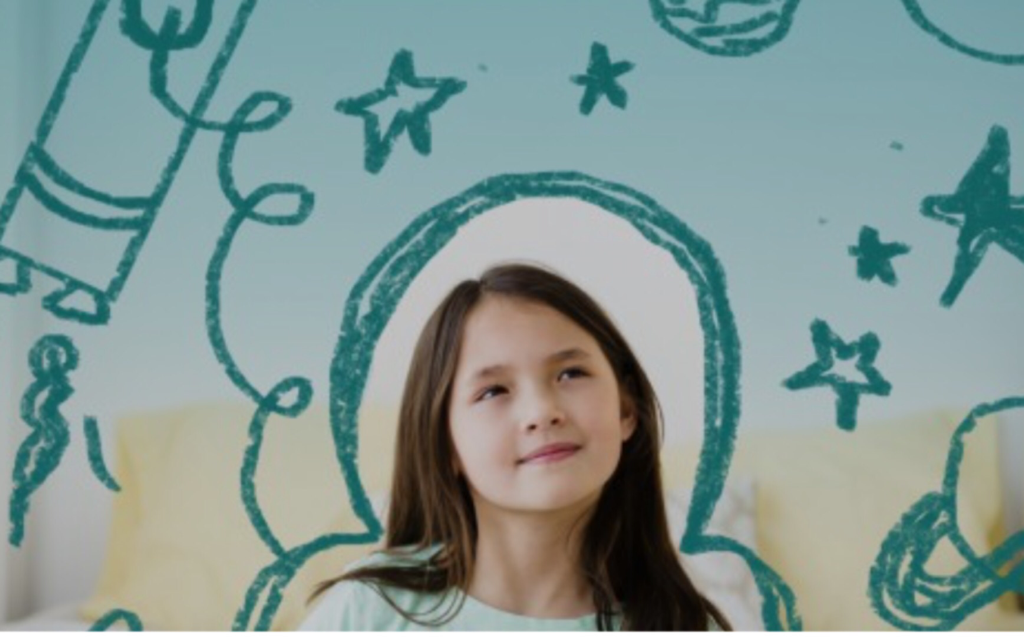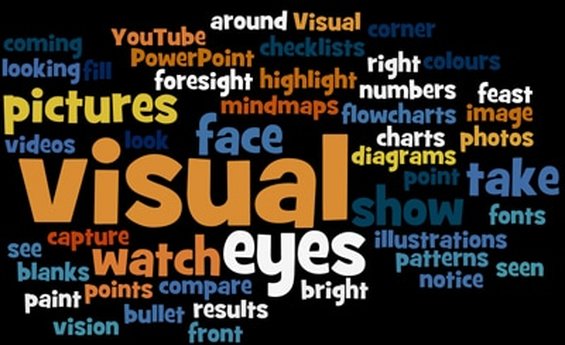ADD? Distracted? Daydreamer?
Or The Visual Child
(Series: Understanding Your Child's Communication/Modality/Learning Style)
Digital-Kinesthetic-Visual-Auditory
Through life coaching, we learn to identify communication styles or "modality" in adults and children. Modality is defined as: "A particular mode in which something exists or is experienced or expressed." Our modality, communication or learning style, is how we operate, communicate and learn in life. It is inherent, and just part of who we are. A child's primary modality is central to how they experience and interact with the world, and can be indicative of their greatest strengths. Identifying and learning how to communicate and teach our children through their strongest modality, is the best way to help them reach their full potential.
There are four communication styles or modalities, they are: Visual, Auditory, Kinesthetic, & Digital. We all have all four of them, but the two we assess highest in are usually indicative of how we move about and operate in life.
There are four communication styles or modalities, they are: Visual, Auditory, Kinesthetic, & Digital. We all have all four of them, but the two we assess highest in are usually indicative of how we move about and operate in life.
The Visual (Spatial) Child
About 40% of the population rate highest in the Visual modality. Visual learners, also called Visual-Spatial learners, are the big picture thinkers of this world. The term Visual-Spatial was created by Linda Silverman, PhD. She noticed that there was a specific group of students who scored very high on the visual and spatial parts of an IQ test, but scored low on auditory or sequential tasks. She also noticed that the Visual-Spatial learners had certain things in common, they thought primarily in pictures, they were good with maps, graphs, charts and timelines, needed to see words in order to spell them, could solve problems intuitively, had uneven subject grades, were often late-bloomers, had issues with perfectionism, were talented in the arts, creating, inventing, building, and technology, had vivid imaginations, and did well with abstract concepts and real world creative problem solving solutions.
Visual children's minds work like view masters or movie cameras, they visually memorize things by seeing pictures in their mind, and are happiest when you draw a picture for them, even better if you color it in. They turn words into images. They paint pictures with their words and their hands. They like working with visual prompts; graphs, charts, maps and diagrams. They like color and will notice what someone wears, their appearance and any irregularities. They learn to spell by seeing the word instead of spelling it phonetically. They sometimes talk quickly. They might be better with faces than with names. They are good at establishing eye contact, and may make judgements based off of appearance. Visual-Spatial learners understand things quickly when they can picture it in their minds, but they can get distracted or start daydreaming while listening to lectures or verbal instruction. They need more time to say what they are thinking, since they must first visualize it in their minds, and can loose their thought if interrupted. Organizational skills are usually not a natural strength, cleaning their rooms, remembering their homework, being able to get it done and turned in on time, may at times seem an impossible task for the Visual child. They can find it overwhelming to see clutter, but will often get overwhelmed with cleaning their rooms. They may need more time for cleaning or organizing, or need to break up the task into multiple parts or steps. They do often enjoy their own form of visual organization, decorating or color coding their rooms, learning areas and materials. Color coding helps them to quickly see like items; home projects, school subjects, and other supplies and materials. Organizing of their own schedules and time can also be an issue for Visual-Spatial learners. A self-timer can help them to keep to a schedule, and over time can improve their ability to "feel" the passing of time.
Visual-Spatial learners learn "whole to part," and can have trouble remembering step by step or verbal instruction. Since the mode of teaching in the majority of schools, curriculum, and textbooks is auditory or sequential, they can struggle in school. To be motivated to learn and have the ability to retain the information - they need to know the reason for learning or have it connected to an interest or something they already know. This isn't a motivational or behavioral issue, it is just the way their mind works - and is part of the whole to part or big picture thinking. They have been called "aha" learners. While they struggle to follow step by step instruction, they will often look disinterested or distracted, until they have their "aha" moment, when what you are saying connects to something they already know or are interested in. In Math, Visual children are the ones who won't show their work, but will come up with the right answer. They don't benefit from timed tests, drills or repetition. Once a concept is learned, the Visual-Spatial learner can move on, the learning is permanent. Although they often struggle with math computation, they are good with patterns and math reasoning, and often come up with their own way of figuring out a problem. They can be very sensitive to teacher's moods, or be intuitive, and may "feel" when a teacher is frustrated with them or doesn't like them. This, along with poor organizational skills, difficulty following verbal or step by step instruction, being misunderstood or judged for being distracted or lacking in motivation, receiving low grades for not showing their work, and more, unfortunately, many times leads to disinterest in school, resentment toward teachers, and feelings of isolation and low self-esteem.
If we only focus on the "weaknesses" of the Visual-Spatial learner and their struggle to learn through Auditory-Sequential methods, both their love of learning and self esteem may be affected. To make sure this doesn't happen, we need to instead focus on and support their strengths, of which there are many, and use these to teach and motivate them.
About 40% of the population rate highest in the Visual modality. Visual learners, also called Visual-Spatial learners, are the big picture thinkers of this world. The term Visual-Spatial was created by Linda Silverman, PhD. She noticed that there was a specific group of students who scored very high on the visual and spatial parts of an IQ test, but scored low on auditory or sequential tasks. She also noticed that the Visual-Spatial learners had certain things in common, they thought primarily in pictures, they were good with maps, graphs, charts and timelines, needed to see words in order to spell them, could solve problems intuitively, had uneven subject grades, were often late-bloomers, had issues with perfectionism, were talented in the arts, creating, inventing, building, and technology, had vivid imaginations, and did well with abstract concepts and real world creative problem solving solutions.
Visual children's minds work like view masters or movie cameras, they visually memorize things by seeing pictures in their mind, and are happiest when you draw a picture for them, even better if you color it in. They turn words into images. They paint pictures with their words and their hands. They like working with visual prompts; graphs, charts, maps and diagrams. They like color and will notice what someone wears, their appearance and any irregularities. They learn to spell by seeing the word instead of spelling it phonetically. They sometimes talk quickly. They might be better with faces than with names. They are good at establishing eye contact, and may make judgements based off of appearance. Visual-Spatial learners understand things quickly when they can picture it in their minds, but they can get distracted or start daydreaming while listening to lectures or verbal instruction. They need more time to say what they are thinking, since they must first visualize it in their minds, and can loose their thought if interrupted. Organizational skills are usually not a natural strength, cleaning their rooms, remembering their homework, being able to get it done and turned in on time, may at times seem an impossible task for the Visual child. They can find it overwhelming to see clutter, but will often get overwhelmed with cleaning their rooms. They may need more time for cleaning or organizing, or need to break up the task into multiple parts or steps. They do often enjoy their own form of visual organization, decorating or color coding their rooms, learning areas and materials. Color coding helps them to quickly see like items; home projects, school subjects, and other supplies and materials. Organizing of their own schedules and time can also be an issue for Visual-Spatial learners. A self-timer can help them to keep to a schedule, and over time can improve their ability to "feel" the passing of time.
Visual-Spatial learners learn "whole to part," and can have trouble remembering step by step or verbal instruction. Since the mode of teaching in the majority of schools, curriculum, and textbooks is auditory or sequential, they can struggle in school. To be motivated to learn and have the ability to retain the information - they need to know the reason for learning or have it connected to an interest or something they already know. This isn't a motivational or behavioral issue, it is just the way their mind works - and is part of the whole to part or big picture thinking. They have been called "aha" learners. While they struggle to follow step by step instruction, they will often look disinterested or distracted, until they have their "aha" moment, when what you are saying connects to something they already know or are interested in. In Math, Visual children are the ones who won't show their work, but will come up with the right answer. They don't benefit from timed tests, drills or repetition. Once a concept is learned, the Visual-Spatial learner can move on, the learning is permanent. Although they often struggle with math computation, they are good with patterns and math reasoning, and often come up with their own way of figuring out a problem. They can be very sensitive to teacher's moods, or be intuitive, and may "feel" when a teacher is frustrated with them or doesn't like them. This, along with poor organizational skills, difficulty following verbal or step by step instruction, being misunderstood or judged for being distracted or lacking in motivation, receiving low grades for not showing their work, and more, unfortunately, many times leads to disinterest in school, resentment toward teachers, and feelings of isolation and low self-esteem.
If we only focus on the "weaknesses" of the Visual-Spatial learner and their struggle to learn through Auditory-Sequential methods, both their love of learning and self esteem may be affected. To make sure this doesn't happen, we need to instead focus on and support their strengths, of which there are many, and use these to teach and motivate them.
To Engage A Visual Child Try Using:
- Art
- Painting
- Drawing
- Collages
- Writing
- Posters
- Decorating
- Coloring Books
- Colorful Pictures
- Magazines Cuttings
- Computer Graphics
- Board Games
- Matching Games
- Puzzles
- Flashcards
- Colorful or Picture Filled Worksheets
- Reading, Picture Books, Comic Books
- Movies, Videos, Video Games, Slide Shows, Cartoons
- Maps, Graphs, Charts, Timelines, Diagrams
- Child-Led or Interest-Based Learning
- Entrepreneurship & Volunteering
For more homeschooling/teaching strategies see: STRATEGIES FOR TEACHING VISUAL LEARNERS*
(*This section of the linked article is about 1/3 of the way down the page.) OR
The introductory video: Visual Learning Style Strategies & Activities
Partial Bullet List: www.ronitbaras.com
Visual-Spatial Learners
"We need individuals with highly developed visual-spatial abilities
for advancement in the arts, technology and business.
These are the creative leaders of society.
We need to protect their differences in childhood
and enable them to develop their unique talents
In supportive environments at home and at school."
Silverman, L.K., & Freed, J.N. (1991).
"We need individuals with highly developed visual-spatial abilities
for advancement in the arts, technology and business.
These are the creative leaders of society.
We need to protect their differences in childhood
and enable them to develop their unique talents
In supportive environments at home and at school."
Silverman, L.K., & Freed, J.N. (1991).
When you know a child's communication and learning style, or modality in life, it makes it much easier to work with them. With this newfound knowledge, things that were seen as problems before, are now understood as just being part of who your child is. When working with Visual children, try making adjustments to your parenting or teaching routine that support the child's need for:
Small adjustments in your parenting or teaching style that take into consideration the special needs of Visual-Spatial learners, can lead to big improvements in the child's outlook and well being, soon resulting in a child who is engaged, excited and happy about life and learning.
Hugs & Happy Parenting!
Julie L Gibson-Vasquez
The Proactive Parenting Coach
- Seeing the big picture, whole to part instruction, or the reason for learning
- Time to process information, explain their thoughts, or make a point
- Connecting new concepts to interests, real life scenarios, or things they already know
- Organizing their things in a way that makes sense to them
- Customizing, making colorful or esthetically pleasing, their learning materials and areas
- Visual aids along with verbal instruction
Small adjustments in your parenting or teaching style that take into consideration the special needs of Visual-Spatial learners, can lead to big improvements in the child's outlook and well being, soon resulting in a child who is engaged, excited and happy about life and learning.
Hugs & Happy Parenting!
Julie L Gibson-Vasquez
The Proactive Parenting Coach
Silverman, L.K., & Freed, J.N. (1991). The Visual Spatial Learner. Davis Dyslexia Association International, www.dyslexia.com




